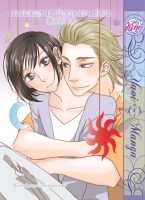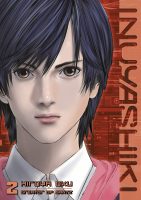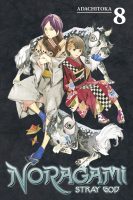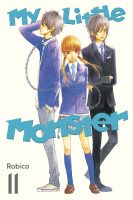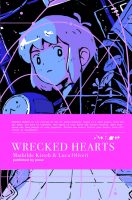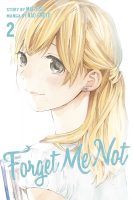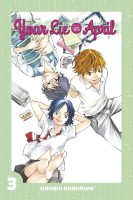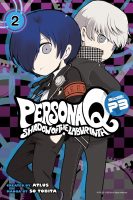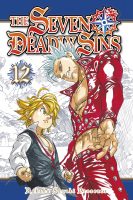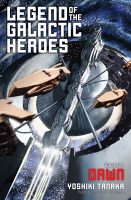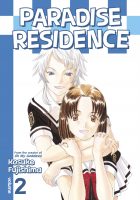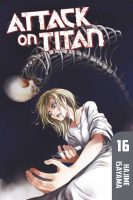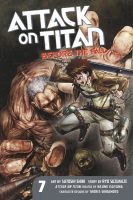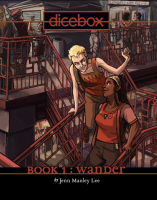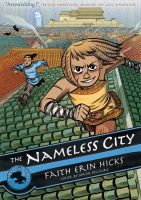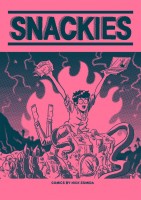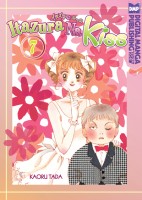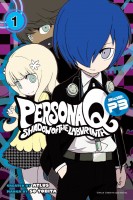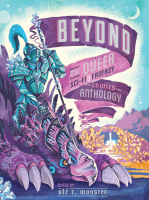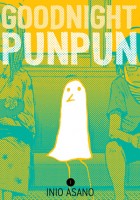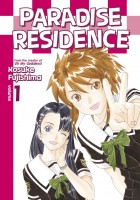My News and Reviews
I finally did it! I actually managed to finish a longer, in-depth feature. The first since I announced the need to scale back on my blogging. It’s been about a month, the last in-depth post being my review of Yui Sakuma’s Complex Age, Volume 1. (Which I suppose thematically may have been oddly appropriate.) Anyway! Last week I posted a new Adaptation Adventures feature, this time focusing on the Mushishi manga, anime adaptations, and live-action film. I actually really enjoy writing these longer non-review features, so it made me very happy to be able to post a new one! The Mushishi Adaptation Adventures post is part of my (at one point monthly) horror manga review project. There’s only one more review to go, the final volume in Setona Mizushiro’s After School Nightmare, and then I’ll be able to bring the project to a close, so I’ll likely be focusing on that for my next in-depth post.
Elsewhere online, last week I came across a few interesting interviews: Oprainfall has a brief interview with Naoshi Arakawa, the creator of Your Lie in April, from Anime Expo. Crunchyroll posted an interview with Reo Kurosu, the producer of the newest Berserk anime adaptation, also from Anime Expo. And over at Okazu, Takarazuka Week begins with an interview with Ako Dachs, a former troupe member. Also, though not an interview, there is a free online course from Keio University that looks incredibly interesting: Japanese Culture through Rare Books. The class just started today, so there’s still time to register!
Quick Takes
 Franken Fran, Omnibus 2 (equivalent to Volumes 3-4) by Katsuhisa Kigitsu. While I wasn’t quite as taken with the second omnibus as I was with the first, I am still enjoying Franken Fran a great deal and definitely plan on reading more of the series. It’s not nearly as fanservice-y a series as the covers might indicate, although there is still some amount of nudity and sexually charged imagery and themes. Sadly, I do know of some people who would likely enjoy the manga who are hesitant to try it simply because of the salacious nature of the cover artwork. For the most part though, Franken Fran is just good, wholesome(ish), gruesome fun. The series remains episodic, so knowing the basic premise is all that’s necessary to jump into most chapters. There’s not much character development at this point either. What Franken Fran does have is a fantastic and frequently dark sense of humor, oddly quirky yet likeable characters, and a bizarre charm. (I mean, even the Flying Spaghetti Monster makes a legitimate appearance in the second omnibus.) Franken Fran is a horror manga that’s fun and funny as well as gross and grotesque. The stories tend to be incredibly weird, but that’s also probably part of why the series is so engaging and entertaining.
Franken Fran, Omnibus 2 (equivalent to Volumes 3-4) by Katsuhisa Kigitsu. While I wasn’t quite as taken with the second omnibus as I was with the first, I am still enjoying Franken Fran a great deal and definitely plan on reading more of the series. It’s not nearly as fanservice-y a series as the covers might indicate, although there is still some amount of nudity and sexually charged imagery and themes. Sadly, I do know of some people who would likely enjoy the manga who are hesitant to try it simply because of the salacious nature of the cover artwork. For the most part though, Franken Fran is just good, wholesome(ish), gruesome fun. The series remains episodic, so knowing the basic premise is all that’s necessary to jump into most chapters. There’s not much character development at this point either. What Franken Fran does have is a fantastic and frequently dark sense of humor, oddly quirky yet likeable characters, and a bizarre charm. (I mean, even the Flying Spaghetti Monster makes a legitimate appearance in the second omnibus.) Franken Fran is a horror manga that’s fun and funny as well as gross and grotesque. The stories tend to be incredibly weird, but that’s also probably part of why the series is so engaging and entertaining.
 Real Account, Volume 2 written by Okushou and illustrated by Shizumu Watanabe. I was a little surprised by how much I enjoyed the first volume of Real Account, but I found that I appreciated its mix of life-or-death entertainment, psychological drama, and social commentary; I was very curious to see how the manga might develop. Real Account continues to be thought-provoking, encouraging readers to really consider the impact that social media has on individuals and society. The series isn’t especially subtle about it, though, and can be a little over-the-top and melodramatic. Online transgressions in the series can lead to someone’s literal death in Real Account, generally in a rather spectacular fashion. The series already has a huge body count and it doesn’t appear as though the rate of casualties will be slowing down any time soon. At this point the motivations and identities of the people behind it all have yet to be revealed, but the games that people are being forced to play are only becoming deadlier. The manga’s creators do go out of their way to ensure that the lead hasn’t yet killed anyone himself, but he most definitely benefits from others killing on his behalf.
Real Account, Volume 2 written by Okushou and illustrated by Shizumu Watanabe. I was a little surprised by how much I enjoyed the first volume of Real Account, but I found that I appreciated its mix of life-or-death entertainment, psychological drama, and social commentary; I was very curious to see how the manga might develop. Real Account continues to be thought-provoking, encouraging readers to really consider the impact that social media has on individuals and society. The series isn’t especially subtle about it, though, and can be a little over-the-top and melodramatic. Online transgressions in the series can lead to someone’s literal death in Real Account, generally in a rather spectacular fashion. The series already has a huge body count and it doesn’t appear as though the rate of casualties will be slowing down any time soon. At this point the motivations and identities of the people behind it all have yet to be revealed, but the games that people are being forced to play are only becoming deadlier. The manga’s creators do go out of their way to ensure that the lead hasn’t yet killed anyone himself, but he most definitely benefits from others killing on his behalf.
 Yamada-kun and the Seven Witches, Volumes 5-8 by Miki Yohsikawa. Although I have been thoroughly enjoying Yamada-kun and the Seven Witches, it’s been a while since I’ve actually read any of the series. These few volumes are generally playful, upbeat, and fun with plenty of kissing happening between all genders. I really like how Yamada’s circle of friends and acquaintances continues to grow without it exactly becoming a harem situation. Granted, the series’ basic premise does mean that sexual harassment occurs on a fairly regular basis. Thankfully, Yamada-kun and the Seven Witches is most definitely fiction, and a comedy at that. However, if taken seriously, the occasionally forced and reluctant kisses, usually necessary for the story and played for humor, may very well be off-putting for some readers. But there’s all sorts of other silliness in Yamada-kun and the Seven Witches, and the plot is progressing quite nicely, too. By the end of the eighth volume, the identities of all seven witches have been discovered. The fallout of this is unexpected and is accompanied by several plot twists and revelations. It feels as though the series’ first story arc is beginning to draw to a close; it should be interesting to see where things go from here.
Yamada-kun and the Seven Witches, Volumes 5-8 by Miki Yohsikawa. Although I have been thoroughly enjoying Yamada-kun and the Seven Witches, it’s been a while since I’ve actually read any of the series. These few volumes are generally playful, upbeat, and fun with plenty of kissing happening between all genders. I really like how Yamada’s circle of friends and acquaintances continues to grow without it exactly becoming a harem situation. Granted, the series’ basic premise does mean that sexual harassment occurs on a fairly regular basis. Thankfully, Yamada-kun and the Seven Witches is most definitely fiction, and a comedy at that. However, if taken seriously, the occasionally forced and reluctant kisses, usually necessary for the story and played for humor, may very well be off-putting for some readers. But there’s all sorts of other silliness in Yamada-kun and the Seven Witches, and the plot is progressing quite nicely, too. By the end of the eighth volume, the identities of all seven witches have been discovered. The fallout of this is unexpected and is accompanied by several plot twists and revelations. It feels as though the series’ first story arc is beginning to draw to a close; it should be interesting to see where things go from here.
